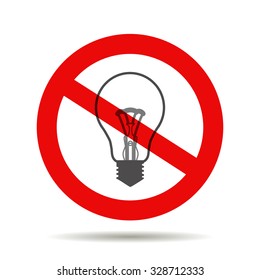Are Decorative Incandescent Bulbs Facing a Ban Too?

Understanding the Ban on Incandescent Light Bulbs

In recent years, governments worldwide have been progressively phasing out the use of traditional incandescent bulbs due to their energy inefficiency. This initiative is driven by the urgent need to reduce carbon footprints and energy consumption to combat climate change. However, as this ban affects a wide range of lighting options, one question that frequently comes up is: Are decorative incandescent bulbs also facing this ban? Let’s delve into this topic to understand the implications and exceptions.
The History and Rationale Behind the Ban

The journey to banning incandescent light bulbs started in earnest with energy efficiency legislation like the Energy Independence and Security Act of 2007 in the United States. Similar regulations followed in the European Union, Australia, Canada, and many other countries. Here are the main reasons behind this shift:
Energy Efficiency: Traditional incandescent bulbs convert only about 10% of the energy they consume into light; the rest is lost as heat. In contrast, LEDs and CFLs can convert up to 90% of energy into light, significantly reducing energy wastage.
Environmental Impact: The push for greener technologies aims to reduce greenhouse gas emissions. More efficient lighting solutions help decrease the demand on power plants, often reducing coal use, which is one of the primary contributors to global warming.
Technological Advancements: Over the past decade, advancements in LED technology have made these bulbs a viable alternative in terms of cost, light quality, and lifespan.
Scope of the Ban

The ban primarily targets general service incandescent bulbs used for everyday lighting. Here’s what it covers:
General Service Lamps: These include standard A19 and A21 bulbs used in most household lighting.
Halogen, CFL, and Incandescent Reflector Lamps: These have also seen regulatory changes, with a move towards phasing out the less efficient versions.
However, the ban does not apply universally to all types of incandescent bulbs:
Decorative and Specialty Bulbs: These include:
- Chandelier bulbs
- Globe bulbs
- Candle-shaped bulbs
- Edison-style bulbs
- Reflector flood lamps used in applications where the design is intended to be aesthetically pleasing or functional in specific lighting setups.
Special Use Bulbs: Lighting for plant growth, stage and studio use, or where color rendition is critical might still use incandescent technology due to the unique qualities of light they produce.
Do Decorative Incandescent Bulbs Face the Same Fate?

To answer this:
Exemptions: Decorative bulbs often receive exemptions because their use is more about aesthetics than broad, everyday lighting solutions. These bulbs are not the focus of energy conservation efforts, and they typically have lower energy usage due to their design.
Alternative Options: Manufacturers have started introducing LED versions of these decorative bulbs, offering the same or similar aesthetic appeal with better energy efficiency. Here are some types of decorative LED bulbs:
Filament Bulbs: These LED bulbs mimic the look of vintage Edison bulbs but use LEDs to recreate the filament aesthetic.
Dimmable LED Bulbs: These can be used in settings where mood lighting is essential, offering the same dimming capabilities as incandescent bulbs.
Color-Tuned LEDs: Some LEDs can change colors or provide light with different color temperatures to match the desired atmosphere.
Key Considerations for Decorative Bulbs

When transitioning to LED or CFL alternatives for decorative bulbs:
Light Quality: LEDs have come a long way in matching the warm glow and color rendition of incandescent bulbs. Look for bulbs with a high CRI (Color Rendering Index) to ensure they show colors accurately.
Dimmability: Not all LEDs are dimmable; ensure to check this feature before purchasing if dimming is important.
Size and Fit: LED bulbs are often larger or have different base configurations, so fitment can be an issue in some fixtures.
Heat Output: LEDs produce less heat than incandescents, which can be a factor for antique or heat-sensitive fixtures.
Table: Comparison of Decorative Bulb Types

| Type | Incandescent | LED |
|---|---|---|
| Chandelier | 15W (Traditional) | 2-4W (LED Replica) |
| Edison-Style | 40W | 4-6W (Vintage LED) |
| Candle | 7W | 1.5-3W (Bent Tip LED) |

💡 Note: While decorative bulbs have exemptions, the market is gradually shifting towards more energy-efficient options, ensuring that new installations and replacements might be more likely to choose LEDs.
In summary, while decorative incandescent bulbs are not the target of the current efficiency regulations, the market dynamics and consumer preferences are shifting towards more sustainable lighting solutions. The availability of energy-efficient LED alternatives allows for the preservation of traditional looks while adopting modern, eco-friendly practices.
The transition to LED or CFL technology for decorative bulbs is not only about complying with potential future regulations but also about embracing sustainability while maintaining the charm and ambiance that incandescent lighting provides. As these energy-efficient technologies improve, the transition becomes smoother, offering both aesthetic and environmental benefits.
As you consider updating your home or business with lighting, remember:
Examine Energy Savings: Even if not mandated, energy-efficient bulbs save money and reduce environmental impact over time.
Focus on Aesthetics: LED alternatives can provide the same look and feel, with additional benefits like longer lifespan and reduced maintenance.
Be Prepared for Future: As energy regulations evolve, staying ahead with energy-efficient technology can prepare you for potential future changes.
What defines a decorative bulb?

+
Decorative bulbs are specifically designed for aesthetic appeal rather than functional lighting needs. They include chandelier bulbs, vintage Edison-style bulbs, and others with unique shapes or decorative elements.
Will I need to replace all my decorative bulbs soon?

+
Not immediately, as these bulbs have exemptions from current regulations. However, opting for LED versions of these bulbs can future-proof your lighting choices as regulations become stricter.
Can I use LED bulbs in my antique or heat-sensitive fixtures?

+
Yes, LED bulbs produce less heat and are generally safe for most fixtures, but check the specifications for fitment and heat dissipation.



